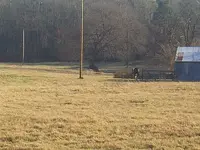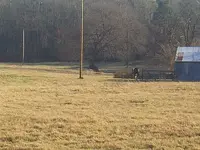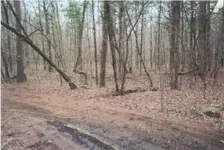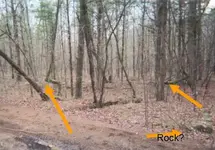Zeke
I found my first Indian Thong Tree back in the early 70's. I have never been the same again!
Just recently I have been introduced to the possibility that some of my trees could be Jesuit Trees. Dowser 501 is the expert in this area. He has been very helpful and generous with his time explaining the Jesuit tree concept to me.
Some of the marker trees are phallic in nature.....still trying to grasp this possibility.
We may never crack the code of the Secret Language of the Indian Bent Trees as the originators of the language and method of marking the trees have gone on to their final resting place. The secrets that were shared with future generations have been lost to "senior moments"....However I understand there are a few Native Americans who are capable of discerning the markings on the trees....I just don't know who they are, they are only known by a few select people whom they have learned to trust as they are and are very protective of their sacred knowledge.
I read that the Jesuit order was expelled from Spain in 1767 and their "treasure" was confiscated and given to the Franciscans in 1768. I am not a historian and never specialized in History so I am not expert in this area. Do some research and I am sure you will find some great information. When you discover new facts please take time to share them with us as we are all learning.
An Indian Trail tree with a pointer high up on the tree was called a "horse and rider tree" so that a man on a horse would be able to see the direction to follow.
I also read that some interested party such as a Jesuit would graft a branch so that it would grow and become part of the tree and become a pointer. Usually placed high up on the original tree. It is a real oddity to see. A tree within a tree!
Arkansas is a great state to look for these beauties. The valley area in the Arkansas Grand Canyon has some fine examples of these trees. You can view some of these trees on the side of the highway as you drive up Scenic Highway 7 to Cliff House. I haven't made this drive for about 5 years...hope they are still there. Another area to hike around is Hobbs State Park I understand the college students are studying these trees as part of a school project.
The tree posted was found in the hills around Lebanon Missouri the Fall of 05. This is an excellent example of an Indian Thong Tree. you can actually see the thong marks on the bark. The tree is hollow and very old. We also found another tree in the very same area. No picture enclosed...as we studied the area I believe this was a site used as a temporary campsite. There was a spring and the soil was indented lower than the surrounding ground. The other tree could have been a Buffalo tree. The Osage would tan and clean the buffalo and deer hides by pulling the hides back and forth over the bent limb.
Six months later when we returned to the site we were able to speak to a few locals. They told us about an encampment in the area, about buffalo and deer and a spring....they were curious as to what we were doing up in them thar hills..they asked "are you real estate agents". They proceeded in pointing us to other of them strange looking trees and an Indian encampment with a nice spring and tell tale signs "circles of 8 teepees"
There was a terrible ice storm January 17, 2006. Many trees were lost in the Bennett Springs and surrounding area.We will go back this spring and prayerfully our tree will be standing.
The following is by:
Red Jacket, Sagoyewatha (Seneca)
"I am an aged tree and can stand no longer"
I am about to leave you, and when I am gone, and my warming has no longer be heard or regarded, the craft and avarice of the white man will prevail. Many winters have I breasted the storm, but I am an aged tree and stand no longer. My leaves are fallen, my branches are withered, and I am shaken by every breeze. Soon my aged trunk will be prostrate, and the foot of the exulting foe of the Indian my be placed upon it in safety; for I have none who will be able to avenge such an indignity. Think not I mourn for myself. I go to join the spirits of my fathers, where age can not come; but my heart fails me when I think of my people, who are so soon to be scattered and forgotten
By The River



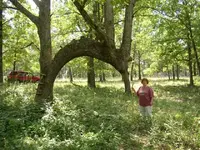
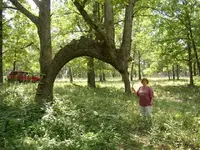
 ?!!!!!!!
?!!!!!!! 
